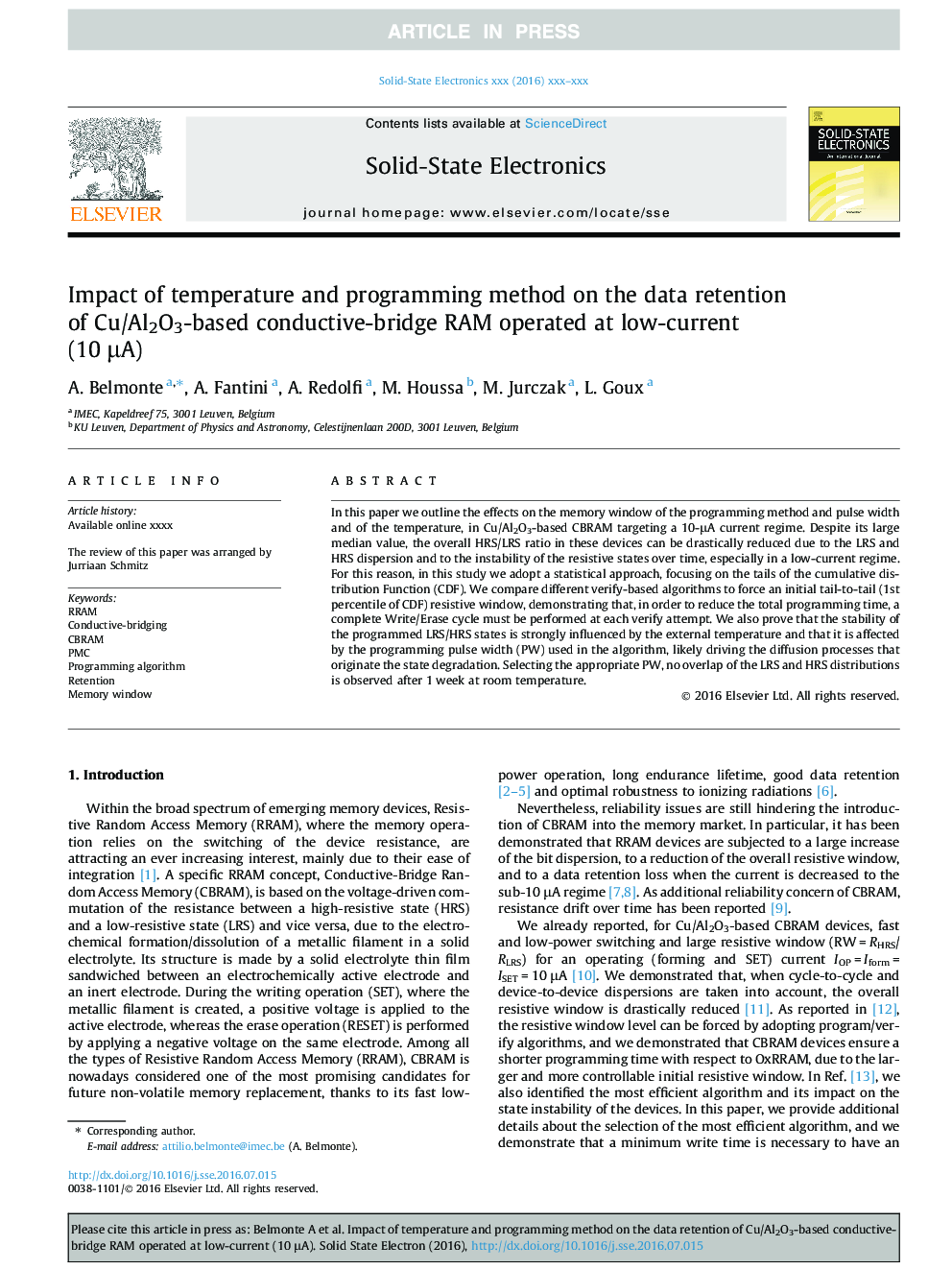| Article ID | Journal | Published Year | Pages | File Type |
|---|---|---|---|---|
| 5010452 | Solid-State Electronics | 2016 | 9 Pages |
Abstract
In this paper we outline the effects on the memory window of the programming method and pulse width and of the temperature, in Cu/Al2O3-based CBRAM targeting a 10-μA current regime. Despite its large median value, the overall HRS/LRS ratio in these devices can be drastically reduced due to the LRS and HRS dispersion and to the instability of the resistive states over time, especially in a low-current regime. For this reason, in this study we adopt a statistical approach, focusing on the tails of the cumulative distribution Function (CDF). We compare different verify-based algorithms to force an initial tail-to-tail (1st percentile of CDF) resistive window, demonstrating that, in order to reduce the total programming time, a complete Write/Erase cycle must be performed at each verify attempt. We also prove that the stability of the programmed LRS/HRS states is strongly influenced by the external temperature and that it is affected by the programming pulse width (PW) used in the algorithm, likely driving the diffusion processes that originate the state degradation. Selecting the appropriate PW, no overlap of the LRS and HRS distributions is observed after 1 week at room temperature.
Keywords
Related Topics
Physical Sciences and Engineering
Engineering
Electrical and Electronic Engineering
Authors
A. Belmonte, A. Fantini, A. Redolfi, M. Houssa, M. Jurczak, L. Goux,
